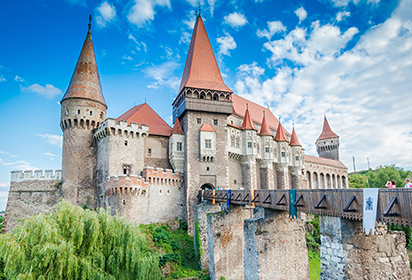Written by Bradt Travel Guides
Transylvania’s fortresses and palaces include a huge range of types of building, from UNESCO World Heritage-listed Dacian hilltop fortresses to the headquarters of Roman legions, from formidable medieval hilltop castles to genteel Renaissance and Baroque palaces. Here are are eight of the best.
Alba Iulia Citadel, Alba County
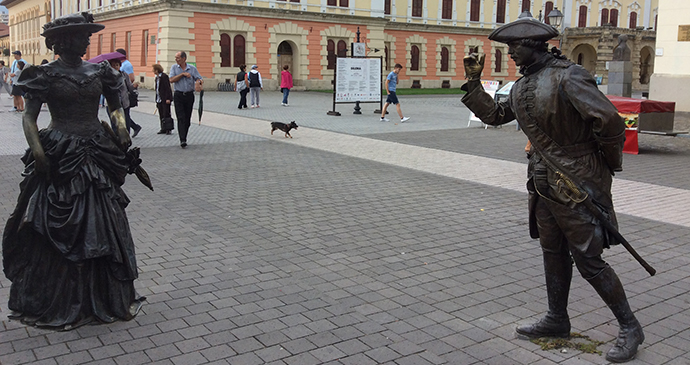
The defining structure in Alba Iulia, inside which all the main tourist attractions are concentrated, is its citadel, the largest in Romania. Its highly distinctive form, in the shape of a star with seven points topped with bastions, was created between 1716 and 1735 by the architect Giovanni Morando Visconti. Officially named the Alba Carolina Citadel, its form owes much to the system of military architectural engineering developed in 17th-century France by the Marquis de Vauban, with its characteristic use of geometric shapes such as pentagons and stars. The interior of the citadel is largely pedestrianised, full of interesting religious and administrative buildings, supplemented by modern statues of Austrian troops, ladies in their finery and the like, and a great place to stroll
Bran Castle, Braşov County
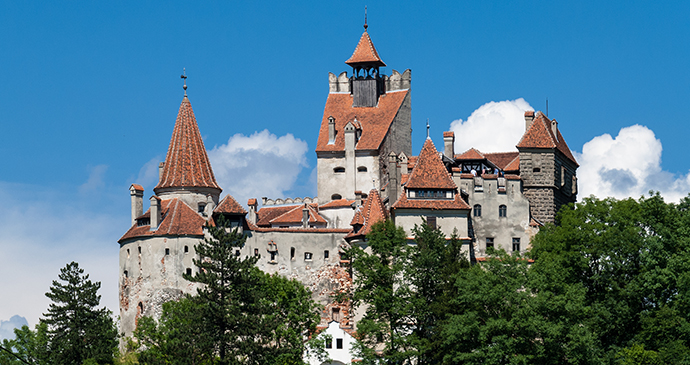
The main attraction of Bran, the striking Bran Castle boasts turrets and steep walls, and looks every inch the Transylvanian castle. It’s also known by many visitors as being Dracula’s real home. Except that it isn’t. Although Bram Stoker probably saw drawings of Bran in the course of his research for the book, he located the castle of his fictional Count Dracula far to the north, near Bistriţa. While there are displays about Count Dracula and vampires in the castle, it is best appreciated by looking beyond the tenuous Dracula connection and focusing instead on the real history of the place, which is of great interest.
Brukenthal Palace, Sibiu
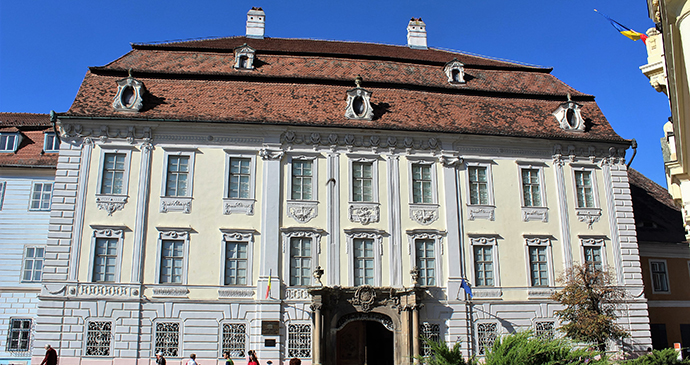
Brukenthal Palace is a Baroque building, modelled on the palaces of Imperial Vienna, and was the home of Baron Samuel von Brukenthal, a figure who has exerted an enormous influence on both the history of Sibiu and on the current artistic richness of the city. Brukenthal was appointed first Chancellor of Transylvania and later its Governor, and during his years of high office gradually amassed a valuable collection of artworks. The building now displays this collection, as the Brukenthal National Museum
Corvin Castle, Hunedoara County
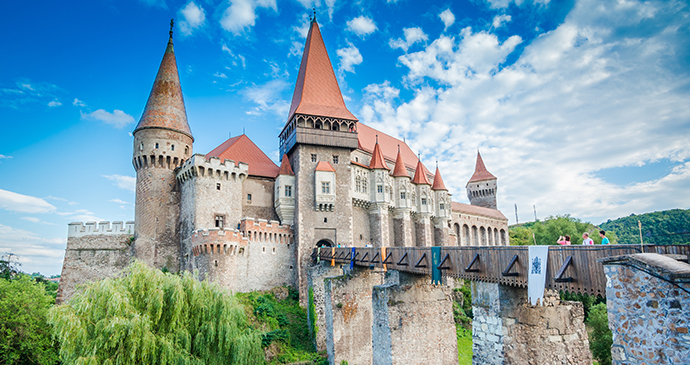
The fairytale-like Corvin Castle is a highlight of any trip to southwest Transylvania. Patrick Leigh Fermor, the great travel writer, described it as being ‘fantastic and theatrical’ and ‘at first glance, totally unreal’. Those who travel there will come to understand that it is worthy of such praise. Visitors approach the magnificent castle by walking over a dramatic wooden bridge across a deep gorge to the riot of square and circular towers, battlements and precipitous walls it offers.
Făgăraş Fortress, Braşov County
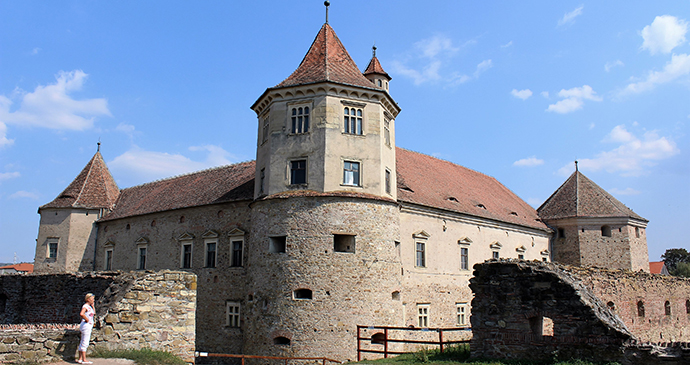
Făgăraş Fortress is at the heart of the town. It is an impressive moated citadel, with an imposing outer wall with four corner bastions, and a castle within. The moat surrounding the fortress is a rather calming feature, with willow trees on its banks and photogenic swans. Some segments of the external walls and bastions have been lost, but the castle within is well preserved. Within the grounds, a wooden gibbet has been set up, where visitors seem to delight in taking photos of their loved ones pretending to die by hanging. The inner castle itself has corner towers. One of these, the 16th-century Prison Tower, served as a political prison in the Communist era from 1948 to 1960.
Sarmizegetusa Regia, Hunedoara County
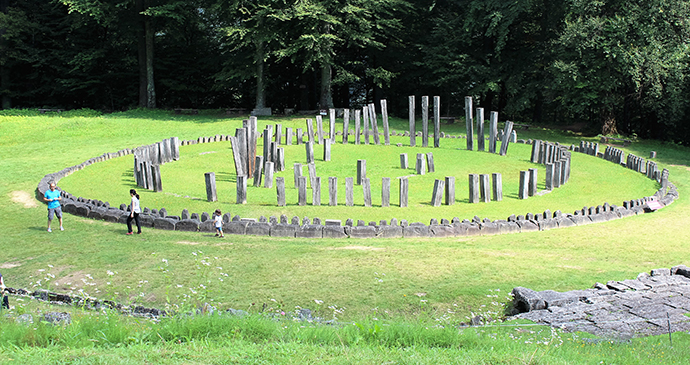
Sarmizegetusa Regia, the capital of the Dacians before their defeat at the hands of the Romans, is the most important of Transylvania’s Dacian fortresses. Visitors can follow an ancient, limestone-paved road, probably once used for processions, downhill. Here the sacred area, laid out on impressive artificial terraces, can be found. On the upper terrace the Large Andesite Temple showcases the andesite column bases of a building which had six rows of ten columns each. A lower terrace displays a mix of rectangular and circular temple bases, including the Large Circular Temple. At this temple some wooden columns have been placed in response to archaeological evidence of wooden posts plastered with clay. This area is also the most photographed part of the site.
Sighişoara Citadel, Mureş County
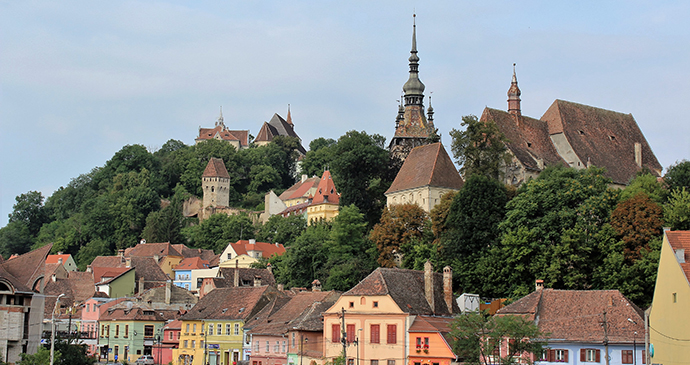
For several centuries, Sighişoara was a political and military stronghold. From the 14th century, the guilds built towers along the citadel walls to protect Sighişoara Citadel (Cetatea Sighişoara) from Turkish raids. These stored supplies and had firing windows for cannons, shells and arrows. Of the original 14 towers and five artillery bastions, nine towers and two bastions have survived.
Teleki Castle, Gorneşti, Mureş County
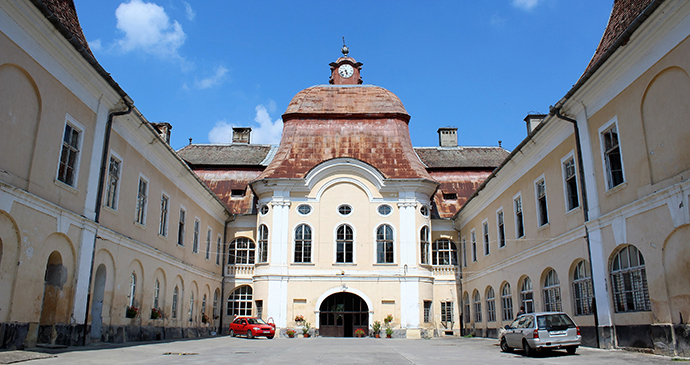
One-time Chancellor of Transylvania, Count Sámuel Teleki, built the Baroque Teleki Castle in Dumbrăvioara, which now houses a school. You can also pay a visit to where he is buried at the nearby Teleki Mausoleum, located in a low whitewashed building outside the village of Dumbrăvioara.
Inspired to visit Transylvania’s castles, fortresses and palaces? Check out our guide for more information:
